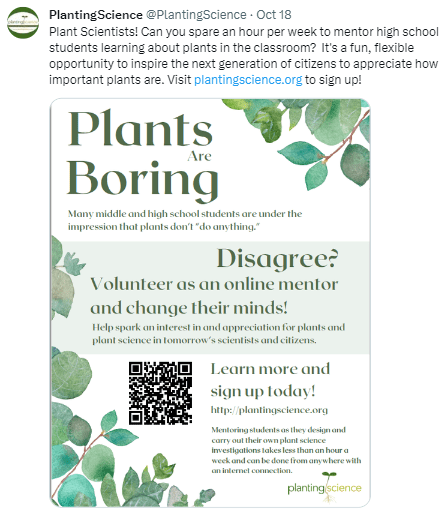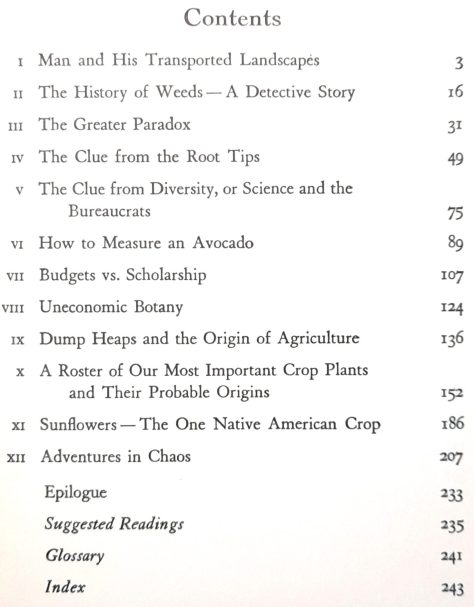 A recent article brought to mind what I learned about Nikolai Ivanovich Vavilov (left) when I was a student, and also conversations I had with two eminent scientists who actually met Vavilov in Leningrad more than 80 years ago.
A recent article brought to mind what I learned about Nikolai Ivanovich Vavilov (left) when I was a student, and also conversations I had with two eminent scientists who actually met Vavilov in Leningrad more than 80 years ago.
Vavilov was a brilliant geneticist, whose story the whole world deserves to know. The Crop Trust has just launched a new web series, Seed Heroes, with this first story, Nikolai Vavilov: The Father of Genebanks.
Surprisingly, as an undergraduate student studying botany in the late 1960s, I never heard anything about Vavilov or his pioneering work. In retrospect, I’m of the firm opinion that he should be part of every plant sciences or genetics degree curriculum. He was such a colossus, and one of my science heroes, about whom I have written or referred to in many blog posts.
It was only when I began a one-year MSc course on the Conservation and Utilization of Plant Genetic Resources at the University of Birmingham in September 1970 that I became acquainted with Vavilov and what he achieved to collect and study different varieties of crop plants from more than 100 countries. All with the aim of using the varieties—or genetic resources as we now can describe them—to breed new crops and make Soviet agriculture more resilient. Indeed, Vavilov is often referred to as the father of plant genetic resources, and correctly so, nevermind father of genebanks.
Vavilov was highly respected in the West, and he visited the UK spending time in the early years of the last century at the John Innes Horticultural Institution near London. His study of crop variation also opened new perspectives on the nature and distribution of genetic diversity in crop plants and their wild relatives, and where crops were domesticated thousands of years ago.
What would Vavilov have gone on to achieve had he not fallen foul of Stalin’s Soviet regime and his nemesis, Trofim Denisovich Lysenko, dying of starvation in prison in Saratov in 1943 at the age of 55?
So, what was Vavilov like as a man and scientist? Having spoken at length with Professor Jack Hawkes and Dr John Niederhauser about their visits to Russia in the 1930s, and meeting Vavilov, I almost feel that I knew him myself, albeit vicariously.
 Jack Hawkes (right, 1915-2007), a potato taxonomist and head of the Department of Botany at the University of Birmingham founded the genetic resources MSc course there in 1969. Jack was also the co-supervisor (with Dr Roger Rowe of the International Potato Center in Peru) of my PhD research and dissertation.
Jack Hawkes (right, 1915-2007), a potato taxonomist and head of the Department of Botany at the University of Birmingham founded the genetic resources MSc course there in 1969. Jack was also the co-supervisor (with Dr Roger Rowe of the International Potato Center in Peru) of my PhD research and dissertation.
In 1937, having just graduated from the University of Cambridge, Jack applied for an assistant’s position to join Dr PS Hudson, Director of the Imperial Bureau of Plant Breeding and Genetics in Cambridge, on an expedition to Lake Titicaca in the South American Andes to collect wild and cultivated potatoes. That expedition was delayed, and it wasn’t until early January 1939, under a new expedition leader, that Jack finally found himself in South America. The germplasm that was collected—from Argentina in the south to Venezuela in the north of the continent—became the founding accessions of what is now known as the Commonwealth Potato Collection.
You can read all about the Empire Potato Collecting Expedition to South America on this website (and view films that Jack made more than 80 years ago) based on Jack’s expedition notes and a 2003 memoir of the expedition, which he titled Hunting the Wild Potato in the South American Andes.
In Chapter 1 of that memoir, Jack describes at length the two week visit he made to Russia to meet with potato experts SM Bukasov, VS Juzepczuk, and VS Lechnovicz, to understand more about potato diversity (he’d never worked on potatoes until then), and discuss where and when to collect in South America since the Russians had already made collections there.
Jack writes that the visit to Leningrad was an experience that changed [his] life in many ways. He never forgot the kindness shown to him, a young man of only 23, by Vavilov and his colleagues.
Arriving in Leningrad on 26 August (or thereabouts), he first met Professor Bukasov, and almost immediately that same afternoon he was taken to the Lenin Academy of Sciences to meet Vavilov. Jack was invited to Vavilov’s apartment in Leningrad and his house in Moscow. They visited research stations together, and Vavilov even took Jack to the opera in Leningrad.
They discussed Vavilov’s ideas on the origin of crop plants and his theory of centers of diversity, his ‘Law of Homologous Series’ (which I applied in a paper on potatoes I presented at a Vavilov Centenary Symposium in 1987), the Russian system of potato taxonomy (which Jack initially used but found it over-complicated), and comparisons of British and Soviet agriculture.
They couldn’t avoid discussing Lysenko and his strong rejection of Mendelian genetics. Vavilov acknowledged Lysenko’s good work on wheat vernalization, and did not seem upset at Lysenko’s rejection of [Vavilov’s] results. Inevitably Jack and Lysenko crossed paths. Jack found him a dangerous, bigoted personality, entirely wrapped up in his own ideas. He was a . . . wholly repellent person. He was a politician rather than a scientist, and very much able to ingratiate himself with the communist politicians in Moscow. Here was, they thought, a Soviet man, born an unlettered peasant and now the sort of “first class” scientist that the communist system had created.
By 1938, Lysenko was in the ascendance, and obtaining more money for his work than Vavilov. In 1940, Vavilov was arrested and sent to prison on a trumped-up charge, and died there three years later, apparently of starvation. Ironic really, given that Vavilov had devoted his life to making agriculture more sustainable and increase crop productivity with the aim of defeating famine.
After he retired from Birmingham in 1982 (I had been appointed lecturer in plant biology the year before), Jack and I would often meet for lunch and a beer, and he would tell me all about that visit to Russia and meeting Vavilov. He said it had been a great experience, and still couldn’t quite believe that Vavilov, a world-famous scientist, had treated him, a young man embarking on his scientific adventure, as an honored guest.
Jack’s lasting impression of Vavilov (who he admired immensely) more than 60 years later was a large, jovial, hospitable and friendly person, putting [Jack] at ease and talking to [him] as an equal about his work and that of his colleagues.
 I first met John Niederhauser (left, 1916-2005) in the early 1970s when I was an Associate Taxonomist at the recently-founded International Potato Center (CIP) in Lima, Peru and he was a consultant/advisor to CIP’s Director General, Dr Richard Sawyer.
I first met John Niederhauser (left, 1916-2005) in the early 1970s when I was an Associate Taxonomist at the recently-founded International Potato Center (CIP) in Lima, Peru and he was a consultant/advisor to CIP’s Director General, Dr Richard Sawyer.
John was the 1990 World Food Prize Laureate. A plant pathologist, he spent much of his career as a member of the Rockefeller Foundation’s agriculture program in Mexico (where his colleague in the wheat program was Norman Borlaug, the Nobel Peace Laureate in 1970), and researching resistance to the late blight pathogen of potatoes, Phytophthora infestans, the cause of the Irish Potato Famine of the 1840s.
In 1976, I had moved to Costa Rica and by 1977 I had been appointed CIP’s regional representative covering Mexico, Central America, and the Caribbean. About then, John’s and my paths crossed again, and we worked closely together for a year to design and launch a regional potato program, PRECODEPA, in six countries (later expanded to several more countries, and funded by the Swiss government for at least 25 years).
John and I traveled frequently together to those initial six countries, spending hours in airports and on the various flights, so had ample opportunity to really get to know one another.
He had been brought up on a farm in Washington state, but at the age of 17 in 1934 he bought himself a ticket to travel to Russia (I subsequently learned he had relatives there). So why choose Russia? Well, as John recounted the story, he had gone to a travel agent in San Francisco, and asked how far he could travel on his available funds. A return ticket to Leningrad was the outcome.
It seems that he and Vavilov met quite by chance. John had been visiting a botanical garden in Moscow, when a gentleman stopped and asked (in English) who he was and where he had come from. It was Nikolai Vavilov, of course. Well, the outcome (based apparently in part on John’s self-declared knowledge of tractor mechanics) was that Vavilov offered him a summer job on a state farm in the Ukraine where important germplasm collections were being multiplied. I’ve subsequently learnt that John spent an academic year in Moscow, all at the behest of Vavilov, before moving to Cornell University, where he also obtained his PhD in 1943 (the year of Vavilov’s death).
And like Jack Hawkes, John was full of admiration for Vavilov. He said that meeting him had changed the course of his life.
In the field of conservation and use of plant genetic resources, Vavilov is a giant. His scientific ideas about crop diversity have mainly stood the test of time. The collections he made are still held in the genebank that now bears his name. And his descriptions of crop diversity (I’ll never forget those of the rosaceous tree fruit forests—apples, pears and the like—in the mountain foothills of Kazakhstan), have inspired later generations of germplasm scientists, me in particular. As an MSc student, I wrote a dissertation on the origin of lentils, Lens culinaris. One of the major publications I had to consult was a monograph by Russian scientist Elena Barulina, Vavilov’s second wife.
Again I find myself wondering just what else Vavilov might have achieved had the Soviet regime never persecuted him so cruelly.



 Before that, I can only think of
Before that, I can only think of 























